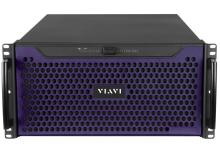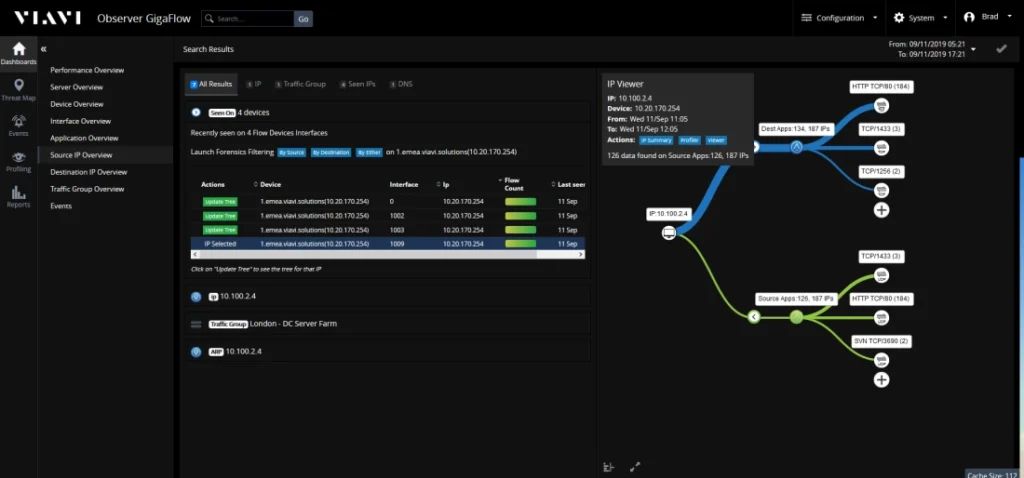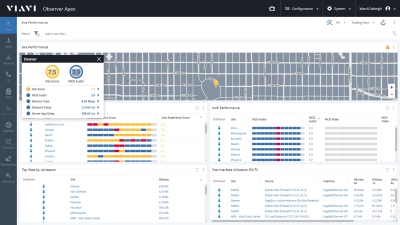
Enterprise Network Performance and Threat Solutions
Viavi Solutions (formerly JDSU) helps customers get the most from their networks–regardless of complexity–and push them to the edge of what’s possible
Observer GigaStor
Enable end-user experience scoring with the best packet capture, analysis, and storage solution in the industry

The undisputed leader in back-in-time analysis, GigaStor eliminates the time-consuming and potentially inaccurate task of recreating problems for troubleshooting and investigating security issues. Just hit rewind to go back in time and review past network activity. Navigate to the exact moment of the service anomaly to see detailed, packet-level views before, during, and after the occurrence.
GigaStor offers the following features and benefits:
- Now available in two virtual versions to maintain visibility in all hybrid IT/cloud hosting environments
- Independently validated line-rate capture performance at 60 Gbps with support for 100 Gb networks
- Back-in-time functionality means never having to wait for a service anomaly to repeat before identifying and putting resolution measures into place.
- Scalable to more than a petabyte of storage capacity; AES-256 data-at-rest encryption
- Expert analytics offers detailed network and application intelligence including deep-packet inspection
- Supports five years of uninterrupted, 100 percent duty-cycle capture without dropping a single packet
Other Observer Products
The Observer Platform is a comprehensive network performance monitoring and diagnostics (NPMD) solution ideal for maintaining peak performance of all IT services.

Observer GigaFlow

Observer Apex
Apex provides global IT service health and status awareness. When service anomalies do arise or potential security breaches are detected, efficient workflows empower NetOps, DevOps, and SecOps groups to uncover root cause and fix it, fast.
Solutions & Applications
VIAVI transforms complex data into clear, actionable insights, ensuring customer satisfaction and your team’s peace of mind. By understanding security from the attackers’ perspective and performance from the users’ viewpoint, you’ll spend less time troubleshooting and more time enhancing your network reliability and security posture.
Cloud Monitoring
Threat Exposure Management
The VIAVI Threat Exposure Management solution analyzes and visualizes your AWS environment to help you pinpoint which cloud resources are most vulnerable to attack and confirms if and, when exposed assets have been compromised, providing a clear picture of your security posture.
High-Fidelity Threat Forensics and Remediation
VIAVI High-Fidelity Threat Forensics provides enriched flow records and packet-level visibility for every network conversation to enhance existing security team analytics, streamline collaboration between SecOps and NetOps teams, and minimize dwell time.
End-User Experience Monitoring
Understanding the user experience is the key to optimized application performance and issue resolution. End-User Experience Monitoring solutions from VIAVI utilize powerful machine learning to deliver real-time insights through a single, intuitive score.
Unified Communications
Delve into the comprehensive UC and VoIP analysis features of VIAVI Observer Apex, from seamless integration of packet and flow data to interactive call visualizations, providing a holistic view that accelerates root cause analysis and enhances overall UC management.
Network Performance Monitoring
VIAVI Network Performance and Threat Solutions, your partner in managing complex network challenges, equips IT teams with data analysis and forensic insights to help optimize IT resources.




